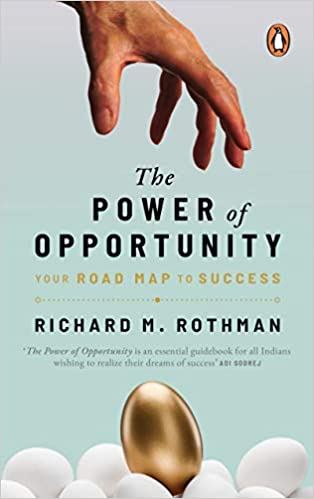| Co-Opportunity knocks |
 |
| By Richard Rothman |
|
Since the publication of Michael Porter’s seminal work Competitive Strategy in 1980, the primary filter for defining market opportunities has been competitive advantage. Popular strategy frameworks such as Porter’s Generic Strategies recommend that opportunities be identified and assessed primarily through the filter of countering competitive threats. For example, Blue Ocean Strategy advises companies to only contest markets in which there are no existing competitors or customers. Clayton Christenson’s Disruptive Innovation Model advises companies to create innovations that are cheaper, simpler, and/or more convenient versions of what competitors already offer. Who cares if you are different? Strategy models that define opportunities primarily through the filter of competitive advantage lead companies to define their market opportunities largely in terms of how they can be different from competitors. But the people who pay you—your customers—do not give a hoot whether you are different from your competitors. They only want you to provide them with increasingly relevant and useful services, delivered through a fair value exchange. From a common sense perspective, it is fairly obvious that your competitors are among the least important people in your world. Do your competitors buy anything from you? Do they fund your company? Do they work directly for you and build your business? Do competitors drive your growth? Of course not. So why make them the point of prime focus? Imagine that you are an individual, not a business, and you are entering the job market. Where should you focus first? How much would an aspiring career-seeker need to focus on his or her competition? Obviously, not much—or not at all. Competitors are a consequence, not a cause Competitive advantage is something that every company strives for. But it is a false god. If you fail, it is rarely because of your competitors. Your competitors are not the cause of your failure. They are the consequence of your failure. Your competitors never deny you opportunities for increased relevance and market growth. You miss opportunities because you failed to identify and harvest relevant opportunities that help your customers and other stakeholders to adapt to the changing environment. Consider some of the most successful companies in the world, the ones which are currently valued at over $1 trillion. These include Apple, Google, and Amazon. Are they valuable because they have striven to be different from their competitors? Clearly they have not. They have high profits and market leadership because they provide consistently relevant and useful services to an increasing number of people, at a fair value exchange. You can do so as well, but it requires a change of mindset. Business is not warfare The mindset of competitive strategy is based on warfare. War is always a zero-sum contest in which only one side can win. The popular substitute for warfare is team sports. For the Indian cricket team to win the match, the other side has to lose. The competing teams have no reason to cooperate. But business is not warfare. You can never completely defeat your existing competitors, nor do you need to. There need not be a single winner; there can be many. Companies with competitive advantage are said to have a competitive moat which guarantees durable profits. This brings to mind the image of the business as a fixed, medieval fortress with high walls, surrounded by a wide body of water, and protected by archers who rain arrows on any competitors who are foolish enough to attack. This stolid conception of competitive advantage may have been relevant in the 15th century, but it hardly fits today’s rapidly evolving business landscape. Just as medieval walls could not stand up to artillery, no fixed competitive moat can survive the relentless forces of change. To make matters worse, popular strategy frameworks such as Porter’s Five Forces position key stakeholders, such as customers and suppliers, as fundamentally hostile forces that are constantly attempting to capture a bigger slice of a limited pie of industry profits. But this mindset fundamentally hampers opportunity. In the 21st century, success does not lie in simply holding on to what you have. That is a recipe for stagnation and irrelevance. The potential for growth is now unlimited. Success lies in constantly identifying and embracing opportunities created by constant change. Growth requires co-opportunity, not competition Identifying, evaluating, and choosing the best opportunities requires a consistent effort of constant adaptation based on collective learning. Harvesting opportunities does not require conflict, but co-opportunity. Viewing stakeholders as competitors leads companies to pursue uncooperative win-lose relationships with their employees, customers, suppliers, channels, and investors. This discourages collaboration and collective learning, leading companies to become fixed in their thinking and increasingly unaware of changes in their broader environment, which is the source of most opportunities. Just as a marriage cannot survive without consistent cooperation, neither can a business. An adaptive business must be a fundamentally cooperative enterprise; this requires the constant collaboration of stakeholders of all types in win-win exchanges of value. The most successful companies of our age, such as Google, Apple, and Amazon, create and maintain cooperative advantage by adapting faster and more successfully than others. They do this by purposefully surrounding themselves with a network of collaborators. They nurture an ecosystem of stakeholders and enterprises who contribute to and benefit from the assessment and development of a wider range of cooperative opportunities created by change. How to build a cooperative moat A cooperative moat is not a static body of water protecting a pile of stones. It is a constantly growing, virtuous circle of cooperative value creation, ideally with you at its centre. It is like a living and constantly evolving organism capable of rapid adaptation and growth based on opportunities. It is a circular engine of value creation which attracts not only customers and stakeholders, but also other companies who exchange value on your platform. A competitive moat is inward-focused and defensive, hampering its growth and ability to adapt to change. In contrast, a cooperative moat is outward-facing and capable of unlimited growth. The moat itself is not a barrier; it is a cooperative learning community which massively increases the ability of its members to take advantage of opportunities. To build a cooperative moat, you need to nurture a collective learning community of employees, customers, investors, channels of distribution, suppliers, and even influencers and critics. Ideally, this community would attract businesses that use the ecosystem as a platform, as app developers do with Apple and Google, and vendors do with Amazon. The internet allows virtually unlimited connections, fostering the development of all types of cooperative moats, and fostering the growth of network effects. Everyone can create a cooperative moat Even traditional offline companies can create cooperative moats. For example, traditional book publishers, such as Penguin India face creeping irrelevance and declining market share, as authors increasingly self-publish and sell directly on Amazon and Flipkart. How can Penguin foster the creation of a cooperative moat to add more value for authors, in order to hold them in their orbit and grow their business? First, they must focus on what they do well, and create a framework for customers, stakeholders, and vendors to collaborate. Penguin has strong skills at choosing quality authors at the higher end of the Indian market. But because of the economics of the business, it can provide only limited marketing resources to its new authors. The emergence of online channels and social media has drastically changed the landscape of book marketing. This is a huge pain point for authors, as many of them, especially new ones, do not know how to market books, only how to write them. I recommended Penguin India to create a community of its thousands of authors—past and present—who can cooperate and share learnings. A collaborative community of Penguin authors will attract businesses that offer the needed marketing resources, which can be peer reviewed by members of the community. The value created by this exclusive learning community would create a collaborative moat for Penguin, and no doubt lead to the identification and adaptation of many new opportunities that will add even more value in the future.
|

